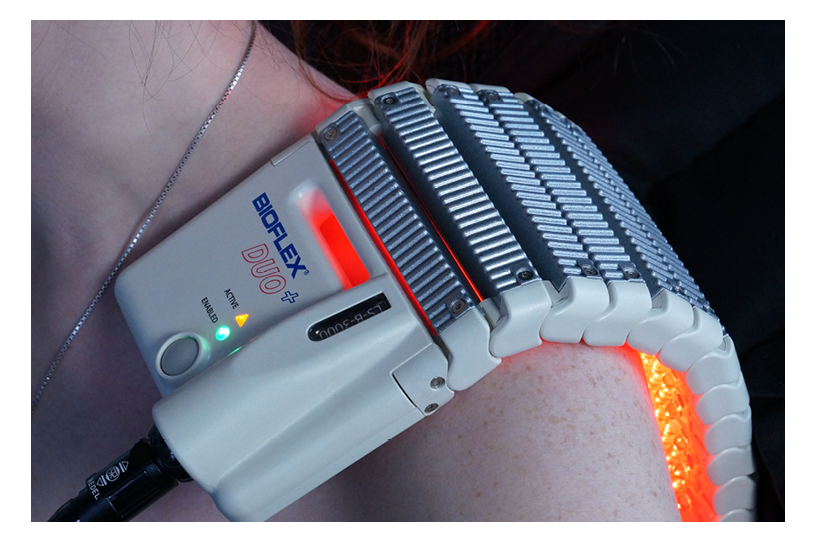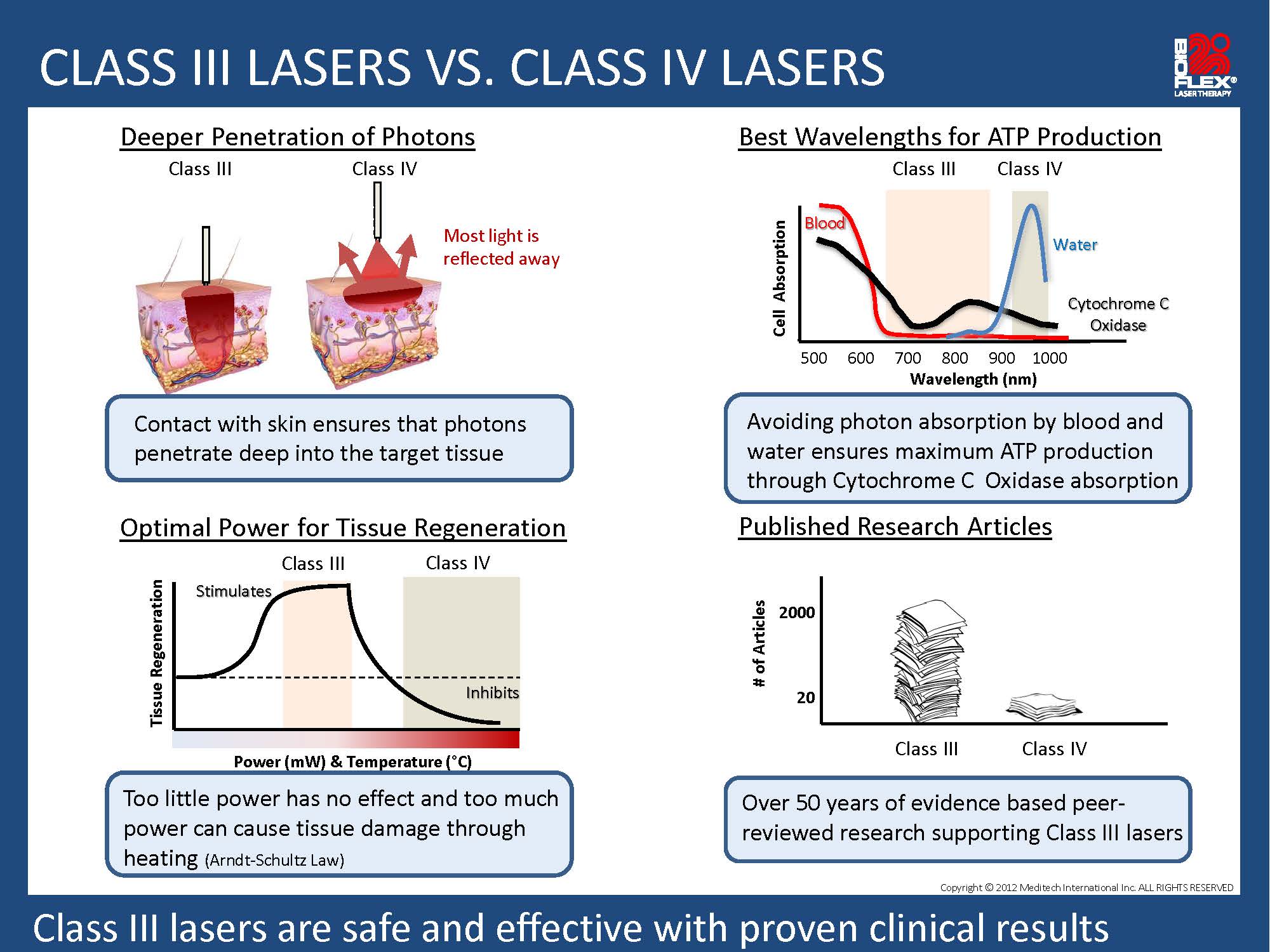Meditech International is a vertically integrated biotechnology company founded by Fred Kahn, MD, FRCS(C) in Toronto in 1989. Over the course of time, the company has established four treatment platforms that provide a high level of success in the treatment of a variety of medical pathologies.
The first platform includes musculoskeletal problems, sports injuries and spinal conditions.
The second introduces a revolutionary method of wound healing that is effective in a timely manner.
The third application is for the resolution of dermatological problems including psoriasis, eczema, acne, etc.

The most recent and exciting platform addresses the treatment of neurological conditions, focusing primarily on cerebral concussion, also known as traumatic brain encephalopathy. As we all know, cerebral concussion has become a major healthcare challenge, as the incidence of this condition increases, the result of high-level sports activities, motor vehicle accidents, military conflicts and episodes occurring throughout the course of daily activities. The negative impact on the quality of life and the stress on economic resources are incalculable. Many options are available to relieve symptoms and hopefully stimulate the healing process. Unfortunately hope, from a realistic perspective, does not produce results.
In view of the limited therapeutic options currently available, aside from being only minimally effective or scalable on an encompassing basis, there is no single application that has provided consistent, effective relief. Reputations have been built on employing nutritional and/or exercise programs, neurofeedback and prescribing an extensive number of pharmaceuticals, the majority of which compound the problem, aside from the adverse effects induced by their addictive propensities. None of these methods provide a specific, curative effect to mitigate the pathology engendered by TBI.
Symptoms generally include headaches, sleep aberrations, a complex array of cognitive and executive dysfunction, brain fog, fatigue and depression, all of which negatively impact the quality of life. Most of these symptoms may be imperceptible initially, however they generally become more evident as time progresses. This is the result of the activation of inflammatory pathways, both at the cellular and physiological level, which leads to deterioration of the neurons, axons, etc. One must be aware that neurodegenerative disorders, including the Dementias, Parkinson’s, etc. may often result from a traumatic episode at an earlier stage in the individual’s life which may have been long forgotten. It may therefore be inferred that aside from chronic pain and depression, more serious late stage degenerative conditions may also result from traumatic brain injuries sustained at an early age.
The World Health Organization has recently published statistics indicating that 6 out of every 1000 individuals have sustained some form of concussion. It is estimated that there are somewhere between 20-30 million North Americans living with TBI-related disabilities. This does not include the vast number of cases that go unreported. Efforts to improve the treatment outcomes should be a priority for all clinicians and healthcare providers involved in these endeavours.
Once a diagnosis has been established, the therapeutic options are limited. Essentially concussion patients presently are prohibited from involvement in high-risk physical activities and demanding cognitive tasks. They are encouraged to rest and pharmaceutical solutions, often widely utilized, unfortunately do not address the underlying pathologies involved.
At Meditech, over the past 10 years particularly, we have focused on the treatment of neurological conditions, primarily traumatic brain injury, as these cases present the largest cohort of neurological problems. Protocols have been developed specifically to treat both acute and chronic conditions which have been further divided into stable, labile and other categories.
It must be observed that isolated injuries to the central nervous system alone are rare. A growing body of evidence indicates that the skeletal and soft tissues of the cervical spine, along with the spinal cord, may bear the primary brunt of the trauma. Aside from the torque and whiplash forces affecting the central nervous system, structures at the atlanto-occipital junction are exceedingly vulnerable to trauma. One should also be cognizant that the injury often includes the auditory and proprioceptive mechanisms. The brain stem, located at the posterior aspect of the brain, provides continuity with the spinal cord. The cranial nerves originate in the brain stem and when a traumatic episode occurs, physiological and neurochemical changes are manifested, leading to varying degrees of neuronal impairment. Neuroprotective functions are dependent on the viability of mitochondrial metabolism, which is essential to the process of cell survival and regeneration.
 Current research indicates that the effects of photobiostimulation consists of the primary effect, i.e. a direct photochemical change secondary to the excitation of photoreceptors and the activation of secondary messenger cascades with subsequent modulation improving function and gene expression. The secondary effect occurs at some point subsequent to light exposure. Impaired mitochondrial oxidative metabolism is associated with neuronal degeneration and this process is reversed with the application of Light Therapy.
Current research indicates that the effects of photobiostimulation consists of the primary effect, i.e. a direct photochemical change secondary to the excitation of photoreceptors and the activation of secondary messenger cascades with subsequent modulation improving function and gene expression. The secondary effect occurs at some point subsequent to light exposure. Impaired mitochondrial oxidative metabolism is associated with neuronal degeneration and this process is reversed with the application of Light Therapy.
Mechanism of Action
Therapeutic effects are actualized via three channels. The first is the direct effect of photon particles interacting with the membranes and intracellular molecules of the cells, constituting the neurological, connective and skeletal tissues that comprise the structures undergoing therapy.
The second is the absorption of the photon or energy particles by the cerebrospinal fluid which are transmitted to the spaces surrounding the central nervous system, the ventricles and the spinal cord.
The third is the humoral effect, i.e. the absorption of photon particles by the intravascular contents and distribution to the affected tissues. The circulation of both cerebrospinal and vascular fluids play a significant role in the actualization of this process.
During 2016 at Meditech, we treated 500 cases diagnosed with cerebral concussion. The results achieved by patients that follow the prescribed therapeutic regimen in a compliant manner are well in excess of an 80% recovery rate. Protocols are continually refined and individualized based on extrapolations from our clinical experience and our extensive database. At this point, we feel that Laser Therapy is the treatment of choice for patients presenting with traumatic brain injury; moreover it offers a precise, consistent and universally effective therapeutic approach to the elimination of symptoms and the full restoration of quality of life. Modified treatment protocols have also been applied on a limited scale to Parkinson’s disease, Dementia, Autism and other neurological conditions. Results to date have exceeded our expectations and in some instances, have been dramatic.
An early and better defined recognition of the diagnosis of concussion and the institution of Laser Therapy are paramount to the resolution of this and other neurological conditions in an expeditious manner.


